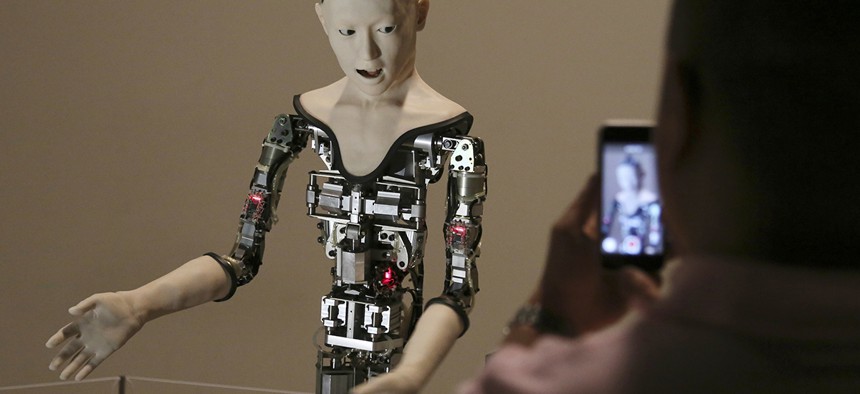This Exceedingly Creepy Robot Moves on its Own

A visitor takes photos of the humanoid robot "Alter" displayed at the National Museum of Emerging Science and Innovation in Tokyo, Monday, Aug. 1, 2016. Koji Sasahara/AP
The robot’s movements are entirely governed by a neural network.
In case you aren’t already terrified that the robot revolution is around the corner, the Japan Science Museum is here for you.
Late last week, the museum unveiled its latest installation, a human-like robot called “Alter.” The robot’s movements are entirely governed by a neural network—a learning computer system modeled after the structure of neurons in the human brain—and devoid of human involvement, according to Engadget. No word on whether its skin was from leftover cans of Play Doh, or if Alter had a "Silence of the Lambs" moment we’d rather not learn more about.
Alter has a series of sensors that detect proximity, humidity, noise and temperature of the room it’s in. Changes in the room’s temperature, or how many people are near the bot, will influence its movements. To add to the nightmare, Alter also “sings” the wave patterns its fingers make as they move:
The robot was built by robotics researchers at labs in Tokyo and Osaka, according to Gizmodo, and it’ll be on display at the museum through Aug. 6. After that, it’ll be back to the lab to figure out how to make it even creepier—er, I mean what to teach it to do next.
Kouhei Ogawa, one of the researchers behind Alter, told Engadget: “This time, Alter doesn’t look like a human. It doesn’t really move like human. However, it certainly has a presence.” It’s true. In videos, Alter gives the impression of having something alive in there that’s neither human nor robot.
Hopefully, no one decides to give Alter legs.


